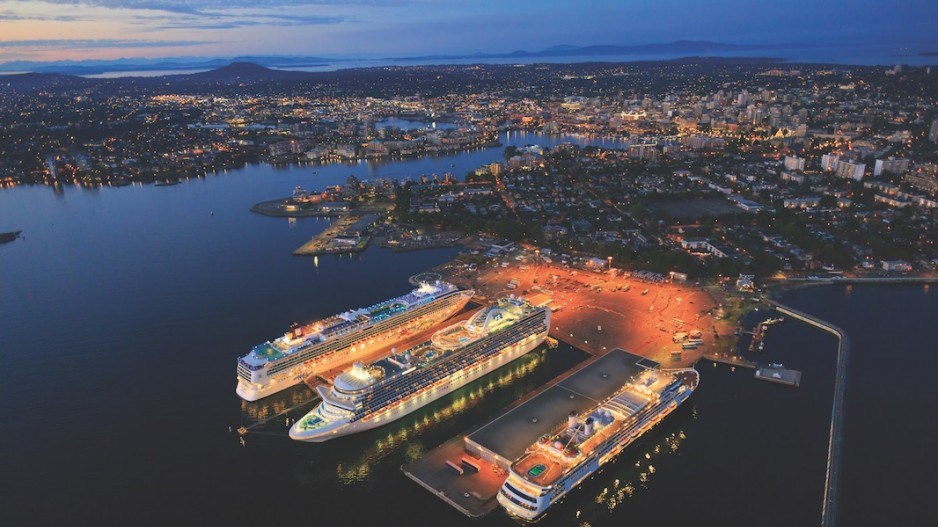Vancouver’s cruise sector is expecting growth, but competition from Seattle is set to intensify with the Port of Seattle readying to build a fourth cruise ship berth at a planned terminal to be jointly built with a yet-to-be-determined cruise line.
The Port of Seattle will release a request for proposals by March in an attempt to find a partner willing to pump US$100 million into a new US$200 million terminal at an undisclosed location along the Seattle waterfront, spokesman Peter McGraw told Business in Vancouver.
The initiative is a familiar strategy for infrastructure improvement in that city. Port of Seattle and Norwegian Cruise Line (NYSE:NCLH), for instance, split a US$30 million bill in 2016 to upgrade the Bell Street cruise terminal at Pier 66. Norwegian has near-exclusive use of that single-berth terminal.
Seattle’s two other cruise ship berths are at its Smith Cove terminal.
Vancouver, in contrast, has been operating exclusively at its three-berth Canada Place hub since the Vancouver Fraser Port Authority (VFPA) stopped allowing cruise ships to dock at the smaller Ballantyne Pier in 2014.
VFPA spokeswoman Danielle Jang told BIV that the port is enhancing its Canada Place hub by expanding and reconfiguring ground transportation and terminal space to add more room for baggage and passengers. It is also adding new signage among other improvements but “it’s still too early to say whether a new cruise ship terminal is a possibility,” she said.
Greg Wirtz, former president of Cruise Lines International Association, North West & Canada, told BIV in 2017 that the VFPA should find a location to build a new terminal because cruise ships are increasing in size, a trend that could turn Lions Gate Bridge into an impassable barrier to cruise traffic.
Few anticipated Seattle’s rise to become the region’s primary cruise ship hub early this century. Seattle’s first cruise season, in 1999, saw negligible traffic, with just six ships that handled 6,615 passengers.
When Vancouver’s cruise sector hit its high-water mark of 1,060,383 passengers in 2002, Seattle welcomed 244,905 passengers.
Jang said that the expectation is for Vancouver to finally surpass that tally in 2019, with 1,080,000 passengers. Seattle, however, is projecting 1,208,590 passengers this year.
The growth in Seattle’s cruise sector has spinoff benefits for B.C. because of the U.S.’s Jones Act, which forbids foreign-flagged cruise ships – which, for tax reasons, is virtually all of them – from starting a trip at a U.S. port, travelling to a second U.S. port and then returning to the first port.
The result is that all ships that are part of Seattle’s Alaskan cruise sector must stop at a B.C. port before returning to Seattle, explained Donna Spalding, a government affairs and community relations consultant at Cruise Lines International Association, North West & Canada.
That means business primarily for Victoria but also for Nanaimo and Port Alberni, she said.
The Greater Victoria Harbour Authority (GVHA) last year started investing $6.8 million in improvements to its cruise ship facilities.
Part of that spending is for bollards, which are heavy posts used to tie up cruise ships and are sturdy enough to hold up to 200,000 tonnes.
The GVHA spent $500,000 in 2018 to add four additional bollards to its South A Pier at Ogden Point to allow that pier to service larger ships, such as the Norwegian Bliss, which can hold 4,200 passengers and 1,500 crew members.
Spending by the GVHA to improve its cruise facilities will likely rise by another $3 million to $4 million because two sections of a massive steel piling intended to secure those extra-large cruise ships toppled off a cargo ship during rough weather and sank to the bottom of the sea in December, according to the GVHA.
Close to 640,000 passengers visited Victoria in 2018; the “vast majority” were on cruise ships on the way back to Seattle from Alaska, said GVHA’s manager of communications, Brian Cant.
Unlike in Vancouver and Seattle, which are home ports for cruise ships, all of Victoria’s passengers were on ships that did not originate or terminate in Victoria.
Those stops by cruise ships are less valuable to the local economy because the cruise ships do not restock or refuel like they do at home ports. •




